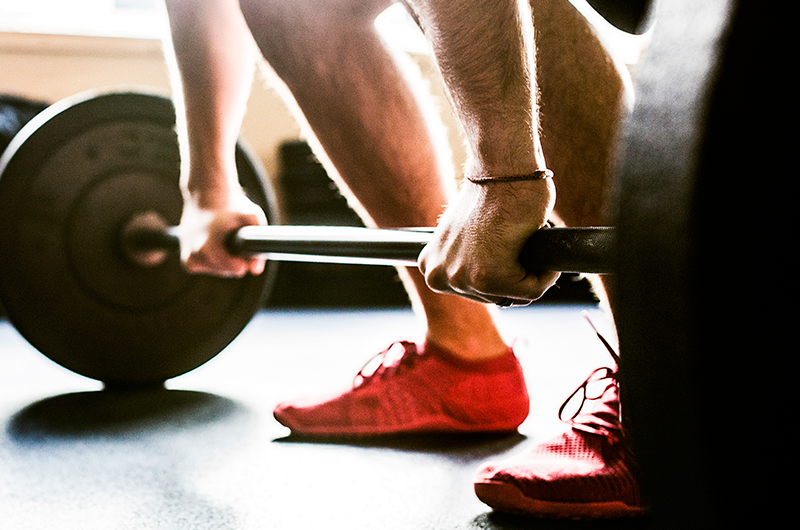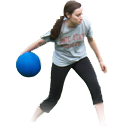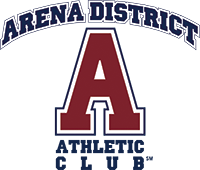
Why You Should Be Lifting Heavy

image credits to My Fit Station?
Why You Should Be Lifting Heavy
Insanity is often described as doing the same thing over and over, yet expecting different results. This definition could apply to many traditional fitness enthusiasts, who have followed the same workout program for years and wonder why they have stopped experiencing results.
The general adaptation syndrome describes how the human body responds to an exercise stimulus. There is the shock phase, when the exercise stimulus is first applied. This is followed by an adaptation phase of approximately eight to 12 weeks, where the body experiences its greatest response to the exercise stimulus. This leads to the exhaustion phase, when the exercise program stops having the desired effect. This is the basic science behind periodization, which is the practice of adjusting workout intensity on a regular, systematic basis to avoid plateaus.
One sure way to break through a plateau is to change some or all of the variables in the workout program. These variables include: exercise selection, intensity, repetitions, sets, rest interval, tempo (speed of movement) and frequency (the number of exercise sessions in a specific period of time). To stimulate almost immediate changes in your body, increase the amount of weight (thereby increasing the intensity) you use in your workouts. If you find yourself not making any gains or simply want a different exercise program, here are six ways using heavy weights can help you make the changes you want to see in your body.

1. Lifting heavy can cause muscles to grow.
Heavy resistance can recruit and engage more of the type II muscle fibers responsible for generating muscle force. When you lift a heavy weight, you may feel your muscles shaking. This is because your nervous system is working to engage more motor units and muscle fibers to produce the force required to move a weight. Type II muscle fibers are generally responsible for the size and definition of a muscle, so activating more of these fibers can lead help provide immediate results.
2. Lifting heavy improves intramuscular coordination, which is important for improving overall strength.
Intermuscular coordination is the ability of a number of different sections of muscle to work together to produce a movement. Intramuscular coordination is the ability of the fibers that comprise a particular muscle to work together to generate a force. Because it requires more force to contract a muscle, using a heavy resistance can improve the intramuscular coordination in a specific section of muscle, which will also help you become more efficient at generating strength.
3. Lifting heavy can help muscles get stronger without getting bigger.
Sarcoplasmic hypertrophy describes how the sarcoplasm of a muscle increases in size as a result of lifting weights at a moderate to high intensity for a higher number of repetitions (e.g., 10 to 15). Myofibrillar hypertrophy describes how muscle fibers become thicker and denser in response to strength training. Using heavy weights focuses on myofibrillar hypertrophy, resulting in muscle that is thicker and stronger, but not necessarily larger. When lifting an optimal amount of heavy resistance, you should only be able to perform five or fewer repetitions while maintaining good form.
4. Lifting heavy weights can help reduce your biological age.
If you’re over the age of 35, you should definitely be using extremely heavy resistance two to four times a week for periods of four to eight weeks at a time. When adult males hit their mid-30s, they will naturally produce less testosterone unless there is a stimulus that causes the body to produce it. Testosterone is a steroid hormone and is responsible for repairing damaged muscle fibers, which can increase the size and strength output of a muscle. Heavy resistance training is one type of stimulus that can cause males to produce testosterone and help increase bone density, both of which are important markers of biological age. Heavy resistance training can also help women over the age of 35 increase their levels of growth hormone, which is important for developing lean muscle and burning fat.
5. Lifting heavy can help increase your resting metabolism.
One pound of skeletal muscle expends approximately 5 to 7 calories a day at rest. Adding 5 to 7 pounds of muscle can increase your resting metabolism (how efficiently your body produces and uses energy) up to 50 calories a day. This might not sound like a lot, but over the course of a year that is a difference of approximately two-thirds of a pound of fat that you can burn while doing absolutely nothing.
6. Lifting heavy stuff makes you look really cool.
Which gives you bragging rights amongst your friends. The downside is that you will have more requests to help friends or family move furniture, but that’s just the price you have to pay for being ridiculously strong.

Using heavier resistance can be intimidating, because it is a lot harder and the applied force will cause muscle damage. (This is one of the ways that muscles grow; to learn more about muscle growth click here). One side effect of lifting heavy is delayed onset muscle soreness, or DOMS. If you have ever felt DOMS, you know how uncomfortable it can be. While it seems counterintuitive to perform light activity when you’re sore, it can help you recover quicker, which will enable you to do the higher volume of exercise necessary for building muscle and making changes in the body.
Machine training can be the safest approach for using extremely heavy weights. For best results, plan on using weights that make five repetitions incredibly challenging (you should not be able to do a sixth rep) and change your program after 10 or 12 weeks so that you’re changing the stimulus to your body. If you want to make sure that you get the best results from your time in the gym, considering hiring a Certified Personal Trainer to help adjust your program so that you are safe when increasing the amount of resistance you use.
Pete McCall, MS, CSCS, is an ACE Certified Personal Trainer and long-time player in the fitness industry. He has been featured as an expert in the Washington Post,The New York Times, Los Angeles Times, Runner’s World and Self. He holds a master’s degree in exercise science and health promotion, and several advanced certifications and specializations with NSCA and NASM.
The Arena District Athletic Club is more than just a gym, it’s a premier fitness facility located in the heart of the Arena District in downtown Columbus. We provide convenience and quality, featuring top-of-the-line equipment, top-notch personal trainers, spa-like locker rooms and a wide variety of free group fitness classes daily including Cardio, Spinning, Barre Fusion, Yoga, Boot Camp and more. We offer free 2-hour parking and convenient contract-free memberships, to fit your healthy lifestyle needs. Don’t just join, belong




